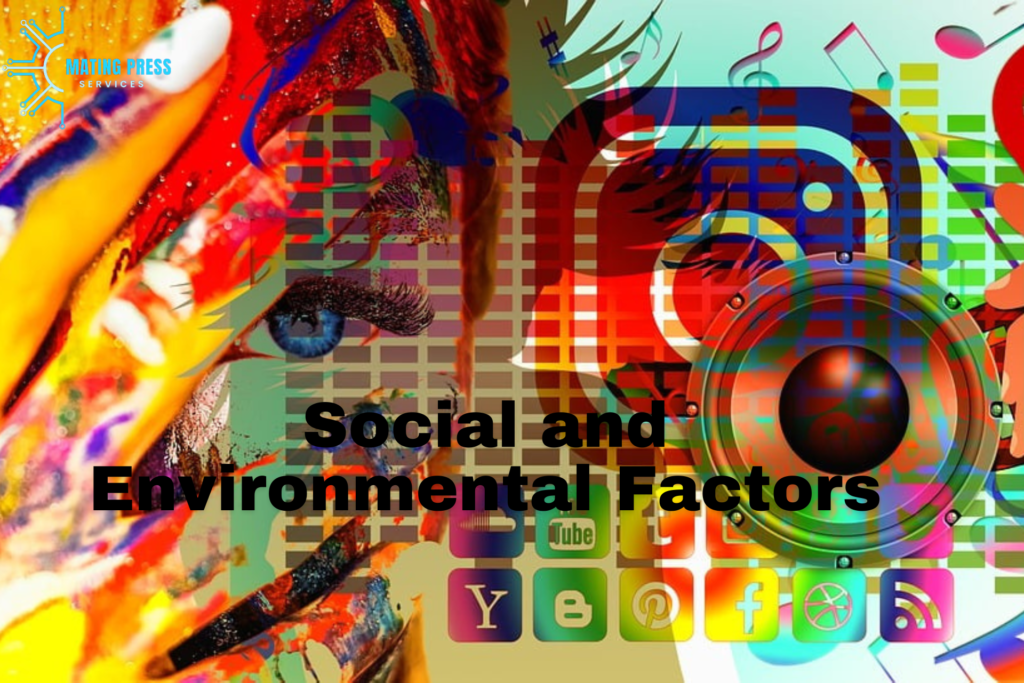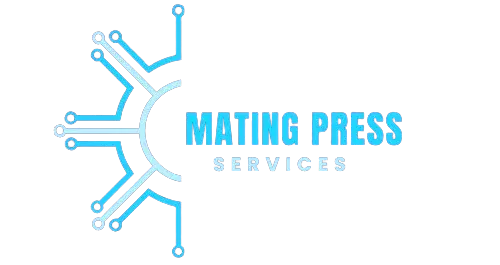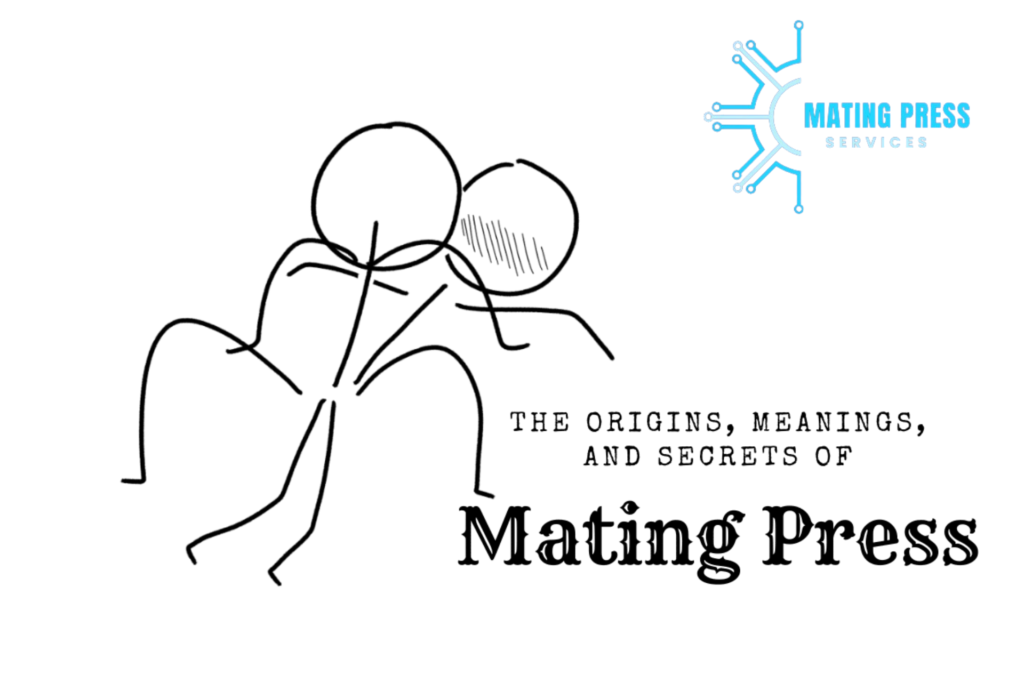What Is Reverse Mating Press In Nature?

The term “Reverse Mating Press” has emerged in popular media and specialized academia. It is not scientifically defined, but it gives a fascinating way of analyzing male-female interaction, mating and some cultural norms. This article probes the different readings of “Reverse Mating Press” across different disciplines like biology, mechanical engineering, and cultural studies.
Biological Perspective: Mating Behaviors and Role Reversals
Traditional Mating Press in Nature
Mating behavior from biological perspective can sometimes be characterized by pressing i.e., one partner usually the male playing a dominant role. One may find such behavior between various species ranging from insects to mammals. In this kind of an affair, males always dominate mating process through mean which may involve strength displaying among others.
The Concept of Reverse Mating Press
The term “Reverse Mating Press” suggests that these traditional roles have been switched. The specific phrase rarely appears in scientific literature but women taking a lead when it comes to mating process is known as such. For instance, females might display particular attention towards males or fight with each other for territories occupied by males within bird populations like this being observed. Such conduct challenges traditional thoughts on sexual selection where men are seen as being more active.
Case Studies and Examples
- Jacana Birds: Female jacanas show reversed sexual size dimorphism whereby they are larger than their male counterparts making them dominant over the latter (Wells 118). They compete aggressively for territory and mates while males are mainly concerned with incubation eggs and rearing young ones at times.
- Anglerfish: Some deep-sea anglerfish species have huge females who dominate in terms of mating (Sbordoni et al 45). Smaller males attach themselves to them becoming parasites that feed on her flesh for survival and contribute sperms during reproduction.
- Spotted Hyenas: Androgenic hormones particularly testosterone levels are high in female spotted hyenas which is responsible for their increased aggression and greater social status (Eaton 107). This role reversal is associated with different hormonal levels and a unique social system among them.
Mechanical and Engineering Contexts
The Concept of Mating Press in Engineering
In engineering, the term “mating press” usually refers to a machine that applies pressure on joining components during manufacturing and assembly. For instance, precision is an important aspect in electronics and automobiles production industry.
Reverse Mating Press in Engineering
On the other hand, “Reverse Mating Press” may refer to dismantling instead of assembling items. This idea has gained momentum in sustainable engineering with emphasize on recycling and reuse of materials. Reverse engineering often relies on careful product disassembly to recover valuable components for recycling, similar to the idea behind “Reverse Mating Press.”
Applications and Implications
- Sustainable Manufacturing: The concept of Reverse Mating Press falls within sustainable manufacturing trends. When businesses target reducing waste as well as conserving the environment, efficient product disassembly becomes vital. This enables recovery of valuable materials and parts without necessarily creating demand for new raw materials.
- Repair and Maintenance: In industries such as aerospace or microelectronics, it is crucial that components can be taken apart for repair or maintenance purposes (Valiente et al 98). It enhances reliability as well as reduces costs by prolonging the life span of products or systems.
- Circular Economy: The circular economy is a model that emphasizes the reusing, recycling and remanufacturing of products. In this model, “Reverse mating press” is a crucial concept which helps to change the linear ‘take-make-dispose’ economy into a sustainable and resource-efficient system.
Cultural Interpretations and Metaphorical Uses
Gender Dynamics and Role Reversals
In its cultural use, the reverse mating press stands for an upending of traditional gender roles and power dynamics. This interpretation mirrors broader societal shifts towards gender equality and the breakdown of traditional roles.
- Media and Literature: In many media or literature works, this concept is presented as satire or social commentary showcasing how traditional roles in relationships can be subverted or rewritten to fit new narratives.
- Societal Shifts: On a metaphorical level, usage of the term ‘reverse mating press’ suggests the aims of movements fighting for gender equality as well as reconsideration of conventional values. Society has increasingly recognized diverse relationship types challenging static role assignment based on gender.
Theoretical and Philosophical Perspectives
The “Reverse Mating Press” may also be seen through theoretical and philosophical lenses exploring identities, social constructs, power dynamics etc.
- Feminist Theory: From a feminist point of view, it contests patriarchal arrangements while insisting on the fluid nature of power relations with regard to it may regulate how society constructs gendered roles throughout time.
- Postmodernism: Within post-modernism thought constructivism aspect features in such deconstructions where this concept finds itself fittingly placing dominance within human relationships under question making it clear that traditional concepts around dominance-submission (in relationships) are culturally constructed thus allowing multiple interpretations steadily coming to realization over time.
- Queer Theory: Using queer theory characterized by complete refusal for any dichotomization between sexes/gender orientations resonates well with the “Reverse Mating Press”. This concept argues that gender and role are fluidly constructed and can be altered.
History and Evolution of the Concept
Origins and Development
The idea of mating press has its roots in biological sciences as well as mechanical engineering, which defines some behaviors or processes. The ‘Reverse Mating Press’ is a relatively new term used to describe non-traditional roles and behaviour patterns.
- Biological Studies: Earlier ethological studies on animal behavior have established diverse mating strategies including role reversals. These findings help to explain how social or environmental factors affect an individual’s behavior.
- Engineering Practices: Assembly and disassembly techniques in engineering have advanced parallel to developments in technology and materials science. Thus, the rise of the term ‘reverse mating press’ in this field shows increased environmental consciousness as well as sustainable use of resources.
- Cultural Evolution: As cultural norms change so does the metaphorical meaning of “Reverse Mating Press” regarding gender relationships. It provides a focused critique of traditional power systems.
Current Research and Theories

Ongoing Studies in Biology
Research into alternative forms of sexual selection among species continues to focus on these behaviors; it examines how they evolve within ecosystems over time as it pertains to speciation patterns, diversity gene flow etc.
- Hormonal Influences: Understanding hormone roles such testosterone or estrogen influencing social structures provides insight into physiological mechanisms facilitating role reversal across species boundaries for example.
- Genetic Studies: Genetic research helps in determining the heritability of some behaviors and traits, thereby explaining how role reversals can originate and be maintained within populations.
- Behavioral Ecology: This field examines how behavior, such as mating strategies, is influenced by ecological factors like resource availability, predation pressure and population density.
Engineering and Technological Advances
In engineering, researchers seek to develop more effective disassembly techniques that are also sustainable. Robotics; advances in robotics; artificial intelligence; materials science innovations are examples of key areas for these developments.
- Robotics and Automation: The use of robots especially in carrying out disassemblies processes enhances precision as well as efficiency especially when it comes to delicate or complex assignments.
- Material Recovery: Research allows for new ideas on products and techniques to extract valuable parts from used equipment which could then be incorporated under the principle of circular economy.
- Sustainability Metrics: Developing metrics that aid disassembly processes’ evaluation from environmental perspective guides best practices & policy making.
Ethical Considerations and Societal Impact
Ethical Issues in Research
Ethical considerations regarding animals used in experiments should ensure they are cared appropriately while also considering how such studies influence ecology as social matters come into play too.
- Animal Welfare: The protection of animals during experiments is fundamental together with understanding the ecological context along with societal implications through those findings.
- Human Studies: Issues concerning privacy, informed consent as well as reinforcing stereotypes have to be recognized when studying human relationships and gender dynamics.
- Cultural Sensitivity: It must be noted that using the term “Reverse Mating Press” metaphorically requires cultural awareness because it may be misconstrued or be offensive to others depending on their background,
Impact on Policy and Society
The Reverse Mating Press concept both as a biological phenomenon and a cultural metaphor affects societies’ attitudes towards it.
- Education and Awareness: Promoting understanding of diverse mating behaviors and social roles can foster inclusivity and reduce stigma.
- Policy Implications: Insights from research can inform policies related to gender equality, education, and conservation.
- Cultural Discourse: This term is used in ongoing cultural discussions about power, identity & change in norms.
Reverse Mating Press
The “Reverse Mating Press” is a biological concept that encompasses biology, engineering as well as culture. It challenges deeply rooted beliefs around dominance and submission both within the natural world and human society. Research on this subject continues to provide insight into the complexities of life as well as evolving relationships and roles. As such, embracing these complications leads to
appreciation for various strategies & behaviors found among human societies including the natural world.
Social and Environmental Factors

Environmental and social factors also play a significant role in shaping mating behaviors, including reverse mating press. The availability of resources, such as food and shelter, can influence how and when animals mate, and which partner takes the lead.
Influence of Habitat
Species living in challenging environments may adapt their mating behaviors to improve their chances of reproductive success. In these cases, the reverse mating press might evolve as a more efficient way to ensure mating success in environments where survival is difficult.
Food Availability and Mating Behavior
When resources are scarce, females may become more selective in their choice of mate, exerting dominance during the mating process. This helps ensure that only the strongest genes are passed on, increasing the likelihood of offspring survival.
Implications for Evolutionary Biology
Reverse mating press offers fascinating insights into the evolutionary processes that shape animal behavior. This phenomenon challenges traditional ideas about mating dynamics and opens up new avenues for research in evolutionary biology.
Ongoing Research in the Field
Scientists continue to study reverse mating press, exploring its implications for our understanding of evolution and natural selection. As new discoveries are made, this unique behavior may offer insights into how species adapt to changing environments and social structures.
Extended Section: The Role of Reverse Mating Press in Natural Selection
One of the key drivers behind the evolution of reverse mating press is the principle of natural selection. In this process, traits that improve an individual’s chances of survival and reproduction are passed on to future generations. Reverse mating press, though not widespread, represents an evolutionary strategy that can provide distinct advantages for species that employ it.
In traditional mating press dynamics, males often compete for access to females, with physical dominance or displays of strength and fitness playing a crucial role. However, in species where reverse mating press is observed, females take on the active role, ensuring they have greater control over mate selection. This control can be especially important in environments where the stakes are high — such as in regions with limited resources or where predation is a constant threat.
Females and Reproductive Success
In many species that display reverse mating press, females invest significantly more energy into the reproduction process. This energy can include producing eggs, carrying offspring, or even nurturing them after birth. For these females, the stakes are high when choosing a mate. By taking control of the mating process, they can be more selective, choosing partners who exhibit desirable traits that enhance the likelihood of their offspring’s survival.
This control also allows females to avoid mating with weaker or less genetically fit males. For example, in species where males are smaller or less dominant, females might assert dominance to ensure that only the strongest individuals pass on their genes. This behavior ensures that future generations are more likely to thrive, perpetuating traits that are beneficial for the species as a whole.
Environmental Pressures Shaping Reverse Mating Press
In nature, environmental pressures can significantly influence mating behaviors, including reverse mating press. In habitats where resources like food and shelter are scarce, females may become even more selective in choosing mates. In these conditions, mating with a subpar partner can lead to lower-quality offspring that are less likely to survive. This makes reverse mating press a critical adaptation that allows females to make better decisions about who to mate with.
Similarly, predator pressure can drive the evolution of reverse mating press. In areas where predation is a constant threat, mating quickly and efficiently becomes essential. By asserting control over the mating process, females can ensure that they select mates who are better suited to survive in their environment, and who are more likely to produce offspring that can avoid predators.
Implications for Sexual Selection
Reverse mating press also plays a key role in sexual selection, the process by which individuals with specific traits are more likely to reproduce. In this case, females who exhibit the ability to dominate during mating may be more likely to pass on those traits to their offspring. This can lead to future generations where females are more dominant or selective, further reinforcing the behavior.
As researchers continue to explore this unique mating strategy, they are finding that reverse mating press challenges traditional ideas about gender roles in reproduction. While males have long been considered the dominant force in mating due to their role in fertilization, reverse mating press suggests that females can have an equally significant impact on which traits are passed on to the next generation.
In summary, reverse mating press offers a unique perspective on the complexity of reproductive strategies in the natural world. By allowing females to take control of the mating process, it enhances their ability to select the best possible partners, ensuring that only the fittest genes are passed on. As we continue to study this phenomenon, we may discover even more about how species adapt their behaviors to improve their chances of survival.
FAQs About What Is Reverse Mating Press In Nature?
Q1: What does the term “Reverse Mating Press” mean in nature?
It generally refers to situations where traditional male-female mating roles are reversed with females taking up more dominant positions during mating processes. Scientifically speaking, however, it is mainly used metaphorically.
Q2: Are there examples of the Reverse Mating Press in animal behavior?
Yes, cases include instances where females dominate over males like in Jacana birdspecies or Spotted Hyenas which behave more like males than their counterparts do?
Q3: How is the concept used in engineering?
The breakdown of components for recycling purposes could be referred by reverse mating press; a process important for sustainability-oriented manufacturing practices within Engineering circles.
Q4: What societal effects does the “Reverse Mating Press” have?
In a figure of speech, it can be seen as a broader reflection of societal trends towards equality and the reconsideration of traditional gender roles and power balances.
Q5: Is there any science behind Reverse Mating Press?
Though this term is not frequently used in scientific literature, but these behaviors are labeled differently and studied as such in biology for example role-reversals in mating strategies,
If you want more details about it, kindly refer to the initial article Triumph in Women’s Wrestling Revolution
Conclusion; What Is Reverse Mating Press In Nature?
In conclusion, reverse mating press is a captivating and complex aspect of animal behavior that highlights the intricate relationships between males and females in the context of reproduction. Through various adaptations and behaviors, species have evolved unique strategies to enhance their reproductive success, often leading to profound implications for their evolutionary trajectories. As we continue to explore the nuances of mating behaviors in nature, understanding phenomena like reverse mating press will provide invaluable insights into the broader narratives of evolution and biodiversity.







